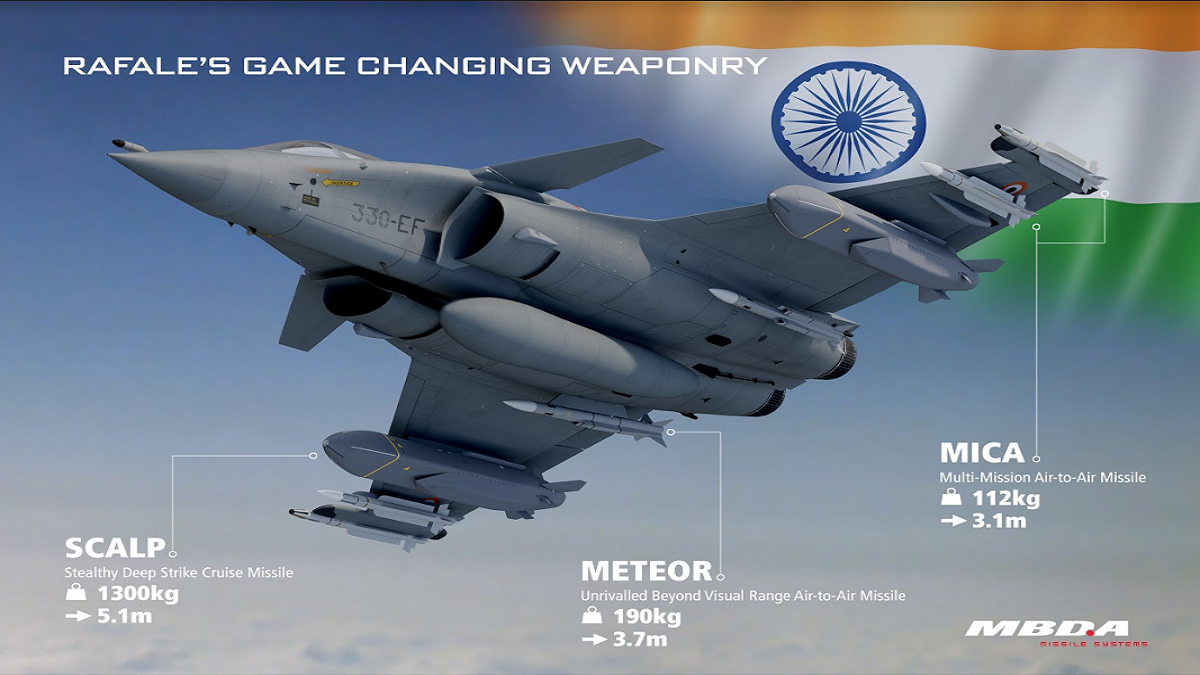


The first batch of five Indian Air Force (IAF) Rafale is scheduled to arrive in India next week. The aircraft will be inducted at Air Force Station Ambala on 29 July subject to weather. The final induction ceremony will take place in second half of 20 August wherein full media coverage would be planned, IAF spokesperson announced on Tuesday.
IAF aircrew and ground crew have undergone comprehensive training on the aircraft, including its highly advanced weapons systems and are fully operational now. Looking at the current border tension with China, upon arrival of first five Rafales, the IAF efforts will focus on operationalisation of the aircraft at the earliest.
India’s Rafale combat aircraft will provide the Indian Air Force not just with a fast and agile modern fighter but one that comes armed with a highly potent set of weapons from MBDA that are unrivalled by any of India’s neighbours.
WEAPON PACKAGE
Meteor: The most famous of these weapons is the Meteor beyond visual range air-to-air missile, which is widely recognised as a game changer for air combat. The Meteor is powered by a unique rocket-ramjet motor that gives Meteor far more engine power, for much longer than any other missile. This means it can fly faster, fly longer, and manoeuvre more than any other missile – giving Meteor the ability to chase down and destroy agile hostile fighters at even the furthers of ranges. As a result, Meteor has a no-escape zone many times greater than any other air-toair missile.
SCALP: India’s Rafales will also be equipped with the SCALP deepstrike cruise missile from MBDA. This stealthy weapon has proven repeatedly in combat its unerring ability to strike hardened and protected targets deep inside hostile territory – without the need for the Rafale to enter hostile airspace. SCALP’s operational effectiveness is the result of three key factors: its high survivability thanks to its long stand-off range, low observability and sophisticated mission planning system; its pinpoint terminal accuracy through its highly accurate seeker and target recognition system; and its terminal effectiveness provide by its powerful tandem warhead and multiple detonation modes.
MICA: The IAF’s Rafales will also be equipped with MICA, a missile the Indian Air Force knows very well as it is also part of the upgrade package for the IAF’s Mirage 2000 aircraft. MICA is the only missile in the world featuring two interoperable seekers (active radar and imaging infrared) to cover the spectrum from close-in dogfight to long beyond visual range. Its ability to fly out to BVR in passive mode before the seeker locks on in the final stages of the end game has earned it the nickname “silent killer” as the target has little time to react or to deploy effective countermeasures.